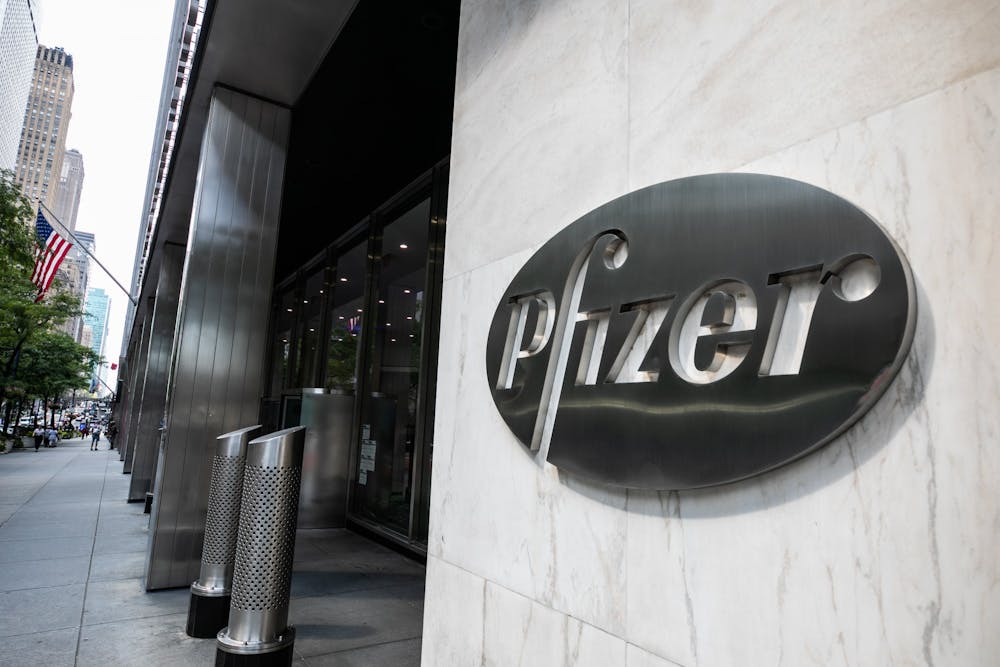By Angelica LaVito and John Tozzi
Bloomberg News
A COVID-19 vaccine from Pfizer Inc. may be on the horizon, but the cost of distributing vaccines across all 50 states and who will pay for that operation remains a huge stumbling block. What is clear is that much of the financial burden and logistical challenge of getting a vaccine to people has fallen on the shoulders of state governments.
President-elect Joe Biden has pledged to invest $25 billion in manufacturing and distributing vaccines. And federal support has already bolstered state budgets this year as the pandemic hit tax revenue. But with some of those dollars already set to expire in coming months, further stimulus stalled in Congress since summer and approval of Biden's plan far from certain, additional money might not reach states until a distribution campaign is well underway.
"We absolutely need more from the federal government," said Sarah Leeds, Idaho's immunization program manager.
Pfizer Inc. and BioNTech SE said Monday that their vaccine candidate prevented more than 90% of symptomatic infections in trials of tens of thousands of volunteers. If the vaccine passes key safety hurdles, an authorization and shipments could be just weeks away.
State, territorial, and tribal health agencies have received about $12 billion for coronavirus response from the U.S. Centers for Disease Control and Prevention this year in emergency funding ordered by Congress, money that covered testing and contact tracing, among other needs. In September, the CDC announced $200 million in grants specifically for vaccine planning. Even with all that, organizations representing state health officials and immunization managers say $8.4 billion more is needed to run the largest mass vaccination effort in recent memory.
In interviews and emails last month, many state health officials said they would likely need additional funds to distribute the vaccine.
Idaho will need more staff to avoid public health employees working days as long as 14 hours during a vaccination campaign, Leeds said. The state will also need to support local health departments already stretched from responding to the novel coronavirus.
Other states find themselves in similar binds. "It will be virtually impossible to implement widespread vaccination for all 12.8 million Pennsylvanians in the timeline dictated with the funding allocated by the federal government," Maggi Mumma, a spokeswoman for the state Department of Health said in an email. Pennsylvania has so far received $6.2 million for vaccine planning, she said.
If Pfizer's vaccine is ready first, states face an additional hurdle: The shots must be kept at temperatures much lower than most freezers can handle.
In an Oct. 26 letter to immunization programs, the CDC asked states to identify sites that could store a vaccine at "ultracold" temperatures of 94 degrees Fahrenheit below zero, which would be required for Pfizer's vaccine candidate.
Vaccines will be "pre-positioned" at those locations once the Food and Drug Administration authorizes the shots, while a separate CDC committee finalizes recommendations on who should get the shots first. The letter asked local agencies to be ready for these shipments by Nov. 15.
Doses will be provided free by the federal government, which has paid billions to drugmakers to secure early supplies. They will be shipped from McKesson Corp., the central distributor for COVID-19 vaccines, or from the manufacturer directly to provider sites. Pfizer has said it plans to handle physical distribution of its vaccine. McKesson has said it also will ship kits with supplies needed to vaccinate people like needles and surgical masks.
Health care providers administering the shots at hospitals, pharmacies and clinics can charge administration fees paid by insurance companies or government health programs.
States will be on the hook for other costs, such as dividing large shipments and sending them to sparsely populated areas. Those present potential chokepoints between vaccine factories and the people whose immune systems they're intended to strengthen.
Last month, states submitted plans to the federal government explaining how they would distribute the vaccines. Of 40 plans that Bloomberg News obtained, only Virginia provided an estimated price tag: $120 million for mass vaccination clinics, equipment and other expenses.
Virginia estimates it will need about $2.5 million to buy freezers, thermometers and equipment to transport the vaccine, among other hardware. It includes another $71 million to help local health districts set up vaccination clinics, with staff, facility rentals, travel and other costs.
Those numbers are sure to change as new details emerge, such as the federal government paying for 6.6 million ancillary supply kits. Virginia has received about $5.4 million of federal funds geared toward the planning effort.
"We know we need funding" after congressional "money goes away," said Christy Gray, the state's immunization program manager.
Big expenses could add up as states staff up for vaccination clinics. They may also have to spend millions on public service announcements and social media to get out the word to an increasingly skeptical public. The share of Americans who say they're willing to get a vaccine has declined sharply, to just half, surveys show.
And no one yet knows how long the campaign will run or even when it will start, with none of the leading vaccine candidates yet proven to work.
"There are a lot of unknowns at this point," said Kurt Seetoo, Maryland's immunization program manager.




